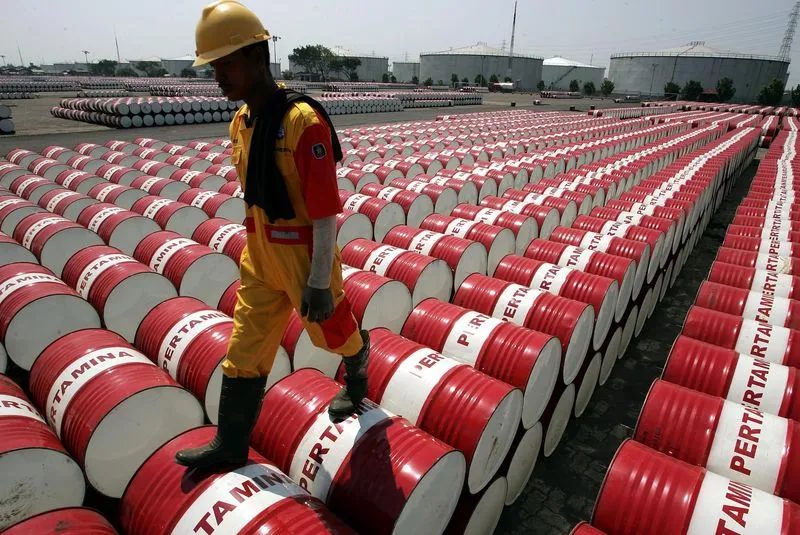
© Reuters.
LCO
+0.55%
Add to/Remove from Watchlist
Add to Watchlist
Add Position
Position added successfully to:
Please name your holdings portfolio
Type:
BUY
SELL
Date:
Amount:
Price
Point Value:
Leverage:
1:1
1:10
1:25
1:50
1:100
1:200
1:400
1:500
1:1000
Commission:
Create New Watchlist
Create
Create a new holdings portfolio
Add
Create
+ Add another position
Close
CL
+0.66%
Add to/Remove from Watchlist
Add to Watchlist
Add Position
Position added successfully to:
Please name your holdings portfolio
Type:
BUY
SELL
Date:
Amount:
Price
Point Value:
Leverage:
1:1
1:10
1:25
1:50
1:100
1:200
1:400
1:500
1:1000
Commission:
Create New Watchlist
Create
Create a new holdings portfolio
Add
Create
+ Add another position
Close
By Peter Nurse
Investing.com — Oil prices edged higher Tuesday, consolidating after a strong start to the week, helped by a potential boost to Chinese demand ahead of a key speech by Fed chief Jerome Powell.
By 08:50 ET (13:50 GMT), U.S. crude futures traded 0.6% higher at $75.08 a barrel, while the Brent contract rose 0.4% to $79.99 a barrel.
These gains follow on from both benchmarks climbing around 1% on Monday, after China, the world’s biggest oil importer and second-largest consumer, opened its borders over the weekend for the first time in three years.
Additionally, there were reports of aggressive buying as Beijing issued a second batch of crude oil import quotas for independent refiners, at a much higher level than last year.
“Higher quotas support the view of recovering Chinese demand this year and the quicker-than-expected change in Covid policy means that the demand recovery could be more robust than initially expected,” said analysts at ING, in a note.
“For 2023 global oil demand is expected to grow in the region of 1.7MMbbls/d, of which 50% will be driven by China. There could be some upside risk to this.”
Gains have been more limited Tuesday ahead of a speech from Federal Reserve chair Jerome Powell, with traders looking for clues for his plans for rate hikes to gauge the impact on the economy and fuel demand.
Also later in the session, the American Petroleum Institute will release its weekly inventory data, while the U.S. government will publish its latest Short-Term Energy Outlook.
There is a great deal of uncertainty in the U.S. market at the moment over how quickly and at what price the Strategic Petroleum Reserve can be refilled. So far, sellers are refusing to come down to the government’s perceived bid level of around $70.
On the supply side, the Group of Seven industrialized nations announced they will seek to set two price caps on Russian refined products in February, one for products trading at a premium to crude oil and the other for those trading at a discount.
There are already signs that Russia is struggling to find buyers for its oil since the EU ban on Russian seaborne crude oil came into effect back in early December. Argus has quoted Urals in the Baltic trading at a little under $38 a barrel, which is around a $40 a barrel discount to Brent.
“If Russia struggles to find buyers for its oil, it will have to start reducing output. And demand for Russian oil will fall even further from February as the EU ban on Russian refined products comes into effect,” added ING.
Source: Investing.com





























